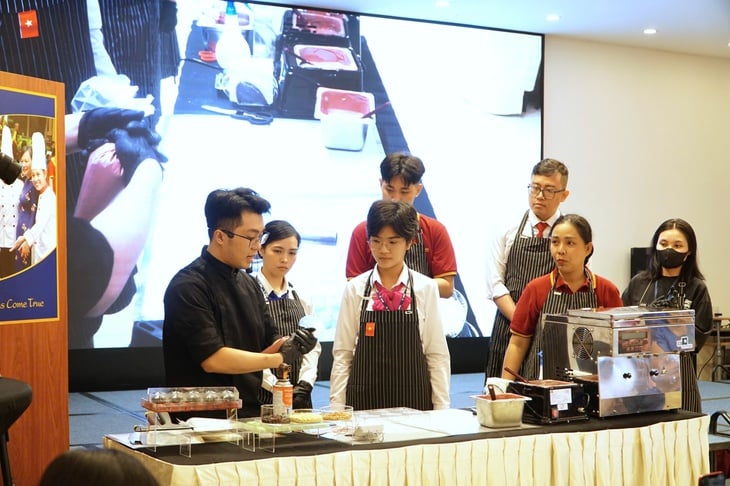
Expert Nguyen Phu Thanh guides students in making chocolate at the workshop - Photo: THU BUI
AI is no longer a technology accessory
Ms. Vo Thi My Van, Principal of Saigontourist College of Tourism and Hospitality, believes that this change is inevitable: “Service students cannot stay out of the AI revolution. Being good at the job is not enough, you also have to know how to tell the story of your product.”
Therefore, in addition to baking and bartending skills, the school added courses on using AI in image design, video editing and personal branding.
According to the school's observation, current recruitment requirements have gone beyond the scope of knowing how to mix drinks and cook.
Food and beverage (F&B) establishments want newcomers to be able to create their own test menus, describe flavors with AI-powered images, script TikTok videos, and even try to predict the amount of ingredients for each shift.
These skills, previously reserved for the communications and design department, are now increasingly becoming a growing requirement for F&B workers.
Ms. Chau Sakiyan (1982), a first-year student, admitted that she had many difficulties when approaching new technology: "The most difficult thing is writing commands. If you just express it wrongly, AI will give very different results."
The school recognizes this as a common difficulty. Many students are still accustomed to typing in random words for the AI to understand, leading to images with incorrect color tones, wrong textures, and even incorrect food proportions. Learning AI is not just about learning to use tools, but also about learning to think descriptively. This is an important skill when entering a real working environment.
Many cooking and bartending applications for students have not been fully exploited.
Students were taught how to process raw photos taken at the event. Each group had to take their own photos of the ingredients, the performance space, and the finished product, then use AI to color-correct to the restaurant style, change the background and add lighting effects, and try to create a suitable poster layout.
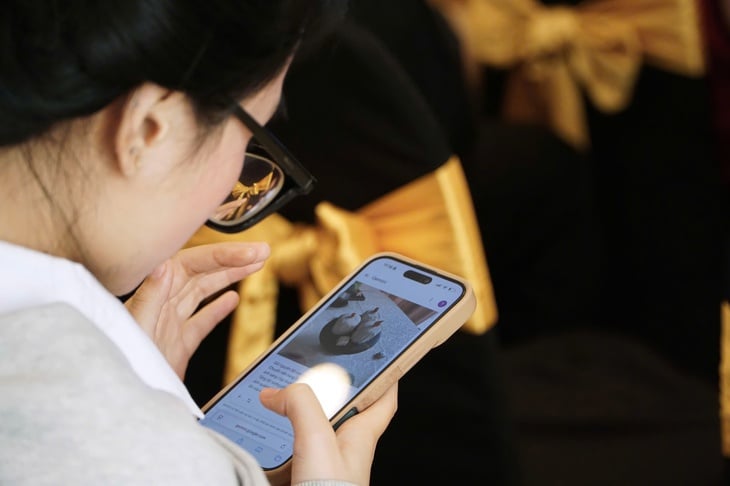
Students learn how to use AI to create images on their products - Photo: THU BUI
Some of you even mock up new table designs or drink styles to see if the imagery fits with your brand direction.
This is an important upgrade compared to regular AI lessons, because students are required to apply their "professional eye", light, composition, and color instead of using AI to fix things if they are not satisfied.
Thai Minh Thuan, a first-year student majoring in tour guiding, said: “Before, I only used AI to answer questions or create images for fun. Only now do I understand the correct process to create a real, usable product.”
Ms. Vo Thi My Van affirmed: “Culinary products must be created by humans. AI cannot change the flavor.” The school emphasized that AI only helps students speed up in the creative and communication stages.
Some students predict that customers may be skeptical of AI images in the beginning. But this is considered temporary. The obvious benefits of AI are cost savings and the ease of testing multiple versions.
In the future, the school plans to continue to incorporate AI into practical training. The focus is on helping students write commands suitable for the service industry context, as well as learning how to create short videos while still maintaining the appearance of real people when fed into AI.
The school also guides students in building personal brands using digital tools and practicing content production for restaurant and hotel communication channels.
Source: https://tuoitre.vn/nau-an-pha-che-cung-dung-ai-20251123113134768.htm








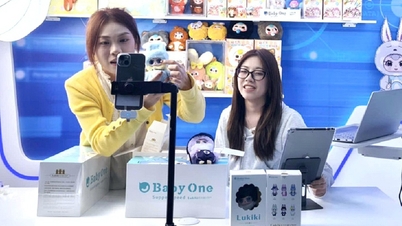


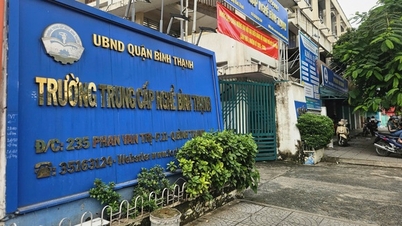

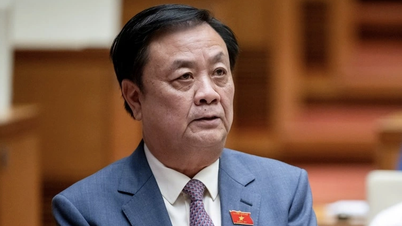




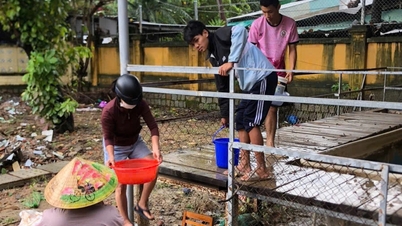


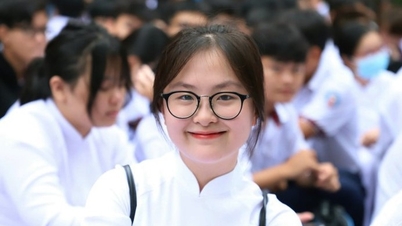

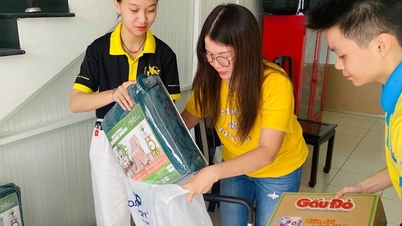







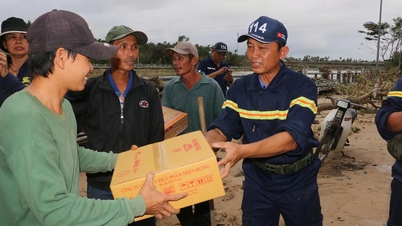

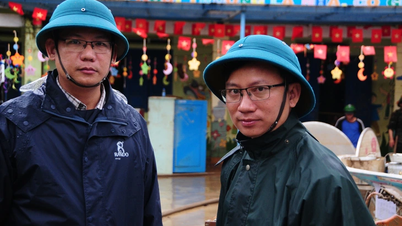

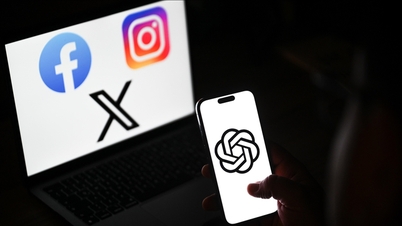

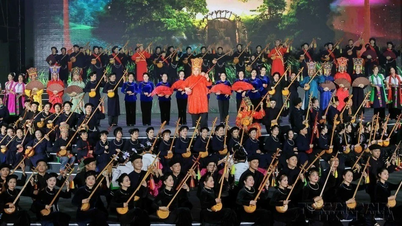

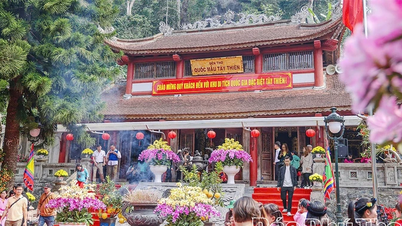



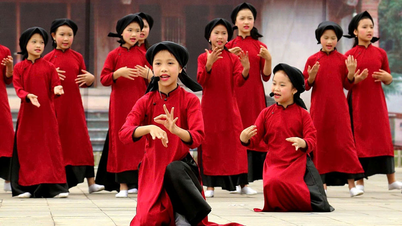

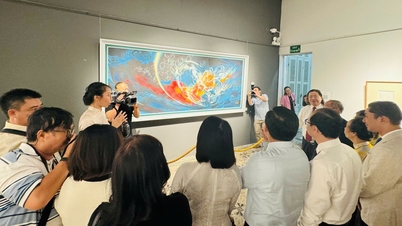

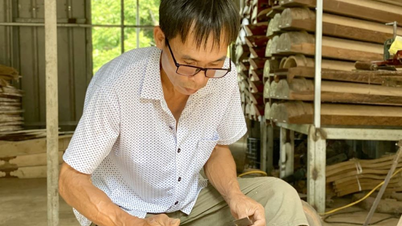

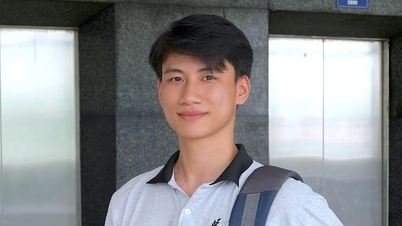
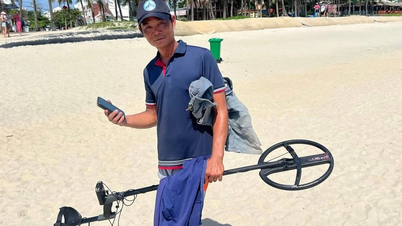



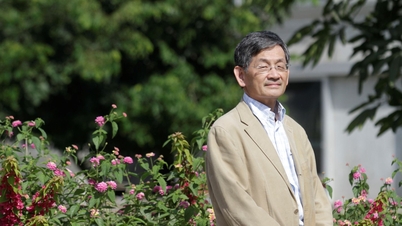



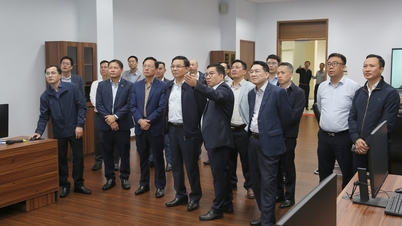











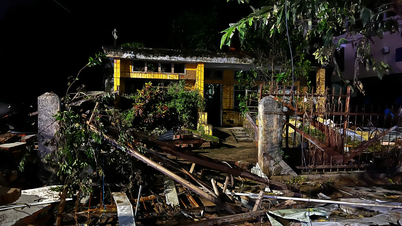
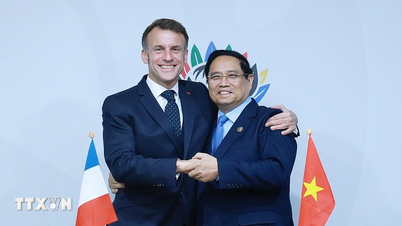
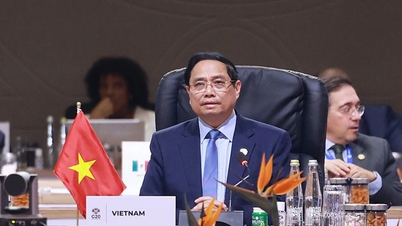

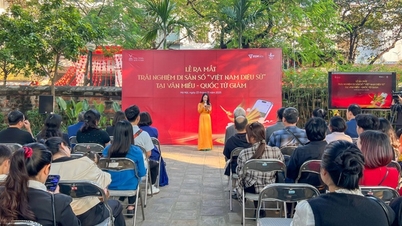



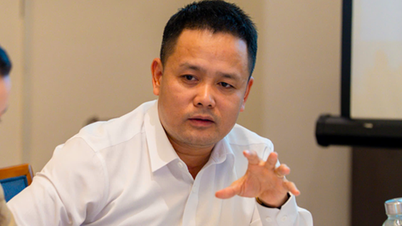

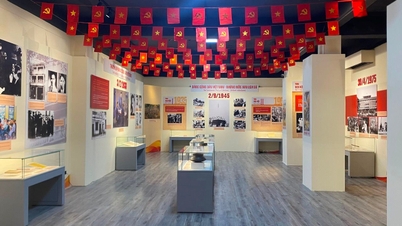

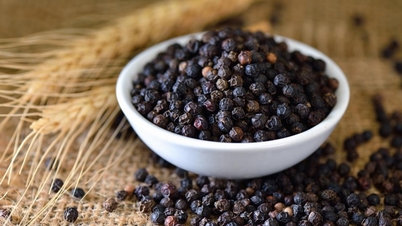

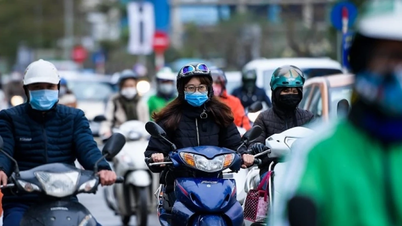
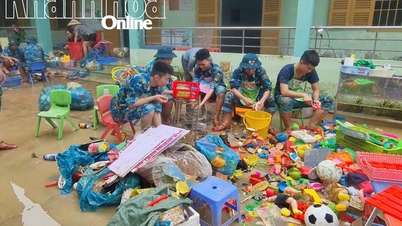



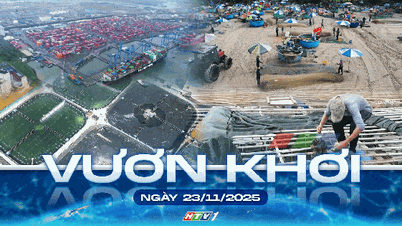











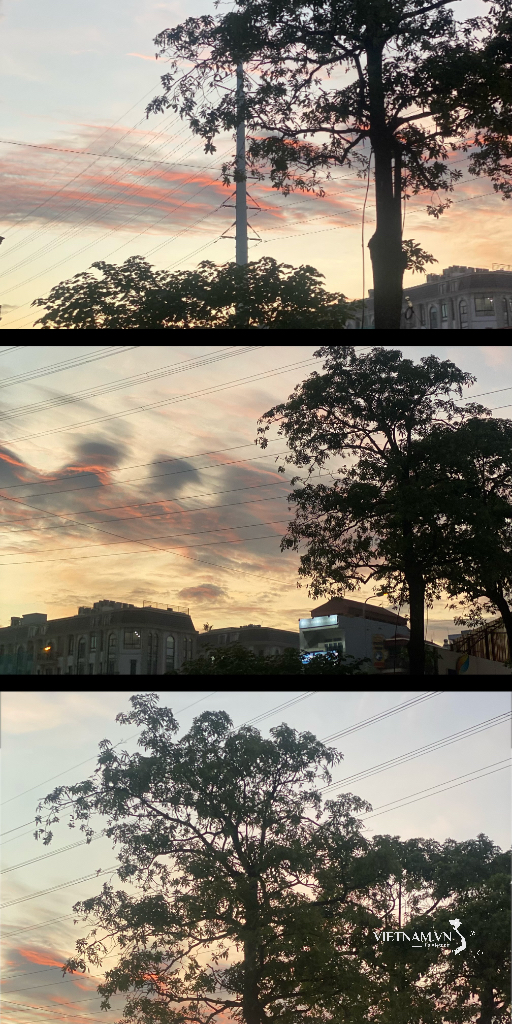


Comment (0)